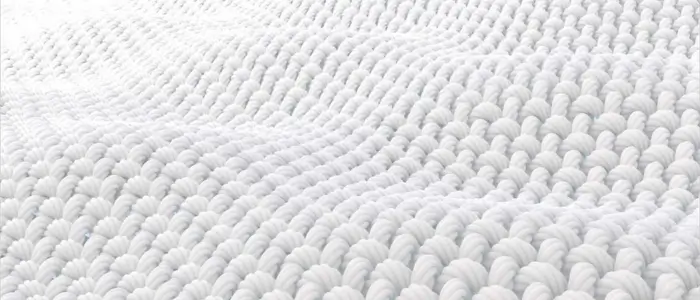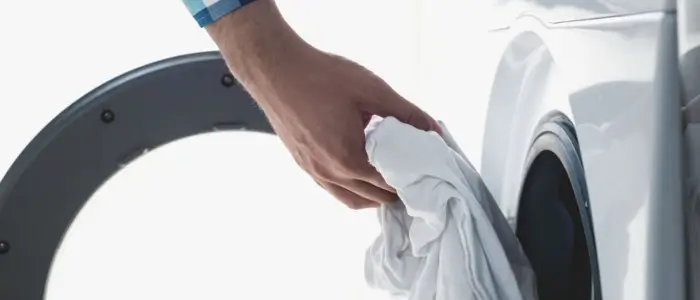
Before we move on to the question “does nylon shrink” we first have to understand this particular material. There are many types of materials used in the apparel factory to make different types of clothes and nylon is no different. It is a type of synthetic polymer, which is known for its versatility and durability. The scientific name for nylon is polyamide. It is a polymer made by repeating units linked by amide bonds.
It is widely used in the textile industry, especially for apparel. The reason for the popularity of this material is its strength and resistance to wear and tear. Nylon is heavily used in the apparel industry because of its lightweight nature, durability, and ability to dry quickly. This material is common in activewear and outerwear.
Nylon was invented in 1935 by Wallace Carothers, an American chemist working at DuPont. His work at DuPont was the reason for the development of this groundbreaking material.
History of Nylon

The first use of nylon was in a toothbrush as it was commercially introduced to the public in 1938. It quickly became popular, especially during World War II, when it was used for various things such as:
- Parachutes
- Ropes
- Military supplies
Nylon is known for its high tensile strength, elasticity, and resistance to damage from oil and many other chemicals. It is also resistant to abrasion and is easy to wash. Nylon is used in a wide range of products which includes:
- Apparel
- Raincoats
- Thread
Now that you know what nylon is, we will now answer your question “does nylon shrink” in detail and what are the common factors that lead to its shrinkage.
Does Nylon Shrink?
So, with all of the durability, does nylon shrink? The simple answer would be that nylon can shrink. However, do remember that it can only shrink under certain conditions. Furthermore, it is generally more resistant to shrinkage if we compare it to natural fibers such as cotton. Proper care of this fiber can help maintain its size and shape.
3 Factors Affecting Nylon Shrinkage

Here are the top 3 factors that affect nylon shrinkage.
Heat and Nylon Shrinkage
Nylon can shrink when exposed to high temperatures as it is a type of polymer. Heat can cause the fibers to contract, which leads to noticeable shrinkage. This is especially true when nylon is exposed to temperatures above 180°F (82°C).
When you wash or dry nylon garments, it is important to use low to medium heat settings to prevent this contraction. Avoid using hot water in washing machines and high heat in dryers, as these can cause the nylon fibers to shrink significantly.
Moisture and Nylon Shrinkage
In addition to heat, water and humidity can also affect nylon. Excessive moisture can lead to slight shrinkage, especially if combined with heat during the drying process. When nylon absorbs water, the fibers can swell and then contract as they dry.
This procedure can lead to minor shrinkage if not major. This effect can happen more in high-humidity environments or when nylon garments are left wet for extended periods. If you want to minimize the shrinkage, it is best to dry all your nylon apparel promptly and avoid prolonged exposure to moisture.
Mechanical Stress and Nylon Shrinkage
Last but not the least, stretching and mechanical stress can also cause the nylon to lose its shape. Repeated stretching, pulling, or mechanical agitation can weaken the fibers and lead to shrinkage over time. Avoid excessive stretching to maintain the shape of nylon garments.
When you handle nylon apparel, make sure to treat it gently and avoid any heavy wringing or twisting. Additionally, use a gentle cycle when you wash it in the machine and avoid overloading. This can help prevent mechanical stress and maintain the garment’s original size and shape.
How to Prevent Nylon from Shrinking?

To prevent nylon from shrinking, it is important to handle it with care when you wash and dry it. Always wash nylon garments in cold water, as hot water can cause the fibers to contract and shrink. Use a gentle cycle on your washing machine to minimize agitation, which can stretch and damage the fabric.
Avoid wringing out the nylon fabric, as this can distort its shape and weaken the fibers. Instead, gently squeeze out excess water or press it between towels. For drying, air drying is the best method, but if you must use a dryer, opt for a low heat setting to prevent shrinkage.
Best Practices for Washing Nylon
When you wash nylon, always use mild detergents that are free from harsh chemicals and bleach. The reason behind using mild detergent is that detergents with harsh chemicals can break down the fibers and damage the fabric. Cold water is ideal for washing nylon because it reduces the risk of shrinking and helps maintain the fabric’s shape and color.
With that, avoid the use of fabric softeners as they can coat the fibers and reduce the material’s breathability and moisture-wicking properties. Instead, you can add a small amount of white vinegar to the rinse cycle to soften the fabric naturally. Always wash nylon garments with similar fabrics to prevent pilling and abrasion.
Best Practices for Drying Nylon

Air drying is the best method to prevent nylon from shrinking. If using a dryer, choose a low heat setting. Here’s a comparison:
| Method | Pros | Cons |
| Air Drying | Prevents shrinkage, energy-saving | Takes longer to dry |
| Machine Drying | Quicker drying time | Risk of shrinkage, uses more energy |
How to Handle Nylon Apparel?
Proper handling of nylon apparel ensures its longevity and maintains its shape and appearance. Store nylon garments in a cool, dry place to prevent moisture buildup, which can cause mildew and affect the fabric’s integrity. It’s best to avoid hanging nylon clothes for long periods, as the weight can stretch the fibers and distort the shape, especially for heavier items.
Instead, fold them neatly to maintain their structure and prevent creases. If hanging is necessary, use padded hangers to provide extra support. Additionally, keep nylon garments away from direct sunlight, as prolonged exposure can weaken the fibers and cause fading. When traveling, pack nylon items carefully, rolling them instead of folding, to minimize wrinkles and save space.
Nylon vs. Other Synthetic Fibers
Here is a basic comparison between nylon and other synthetic fibers.
| Feature | Nylon | Polyester | Spandex |
| Durability | High | High | Medium |
| Flexibility | High | Medium | Very High |
| Moisture Wicking | Medium | High | Medium |
| Common Uses | Activewear, outerwear | Sportswear, everyday | Athletic wear, underwear |
Benefits of Nylon in Apparel
Nylon offers several benefits that make it a popular choice in the apparel industry. One of the key advantages is its great flexibility, which allows for comfortable movement and a better fit. This makes nylon ideal for activewear and sports clothing, where ease of movement is essential. Additionally, nylon is lightweight, which adds to the comfort and wearability of garments made from this material.
Nylon is also quick-drying, which is particularly useful for activewear and outerwear. Its ability to dry rapidly helps keep the wearer comfortable and reduces the risk of developing odors. Another significant benefit of nylon is its resistance to damage from oils and chemicals, which means it maintains its appearance and functionality even when exposed to harsh substances.
Durability is one of nylon’s standout features. It is highly resistant to wear and tear, which makes it ideal for durable apparel. This durability ensures that garments made from nylon can withstand frequent use and washing without losing their shape or integrity.
Whether for everyday clothing, sportswear, or specialized garments, nylon’s is an exceptional material due to different benefits that come with it including:
- Flexibility
- Lightness
- Quick-drying properties
- Chemical resistance
- Durability
All of these things make it a versatile and valuable material in the apparel industry.
Customized Nylon Apparel by The Apparel Factory
If you want customized nylon apparel at wholesale prices or in bulk then The Apparel Factory is your best option. They have many great nylon apparel and accessories including wholesale t-shirts, jackets, caps, bags, and much more. They also have a range of customization options such as embroidery, screen printing, and heat transfer. This means you can pick any of the available products and choose the customization option you want as per your budget and needs.
Does Nylon Shrink – FAQs
Can you shrink nylon?
Yes, nylon can shrink under certain conditions, especially when exposed to high heat during washing or drying.
Does nylon shrink in the wash?
Nylon can shrink in the wash if washed in hot water. To prevent shrinkage, wash nylon garments in cold water.
Does nylon shrink when dried?
Nylon can shrink when dried at high temperatures. To avoid this, air dry nylon garments or use a low heat setting in the dryer.
Conclusion
So, now you would have a good idea of what nylon is and does nylon shrink or not. This material is great due to several reasons which we discussed in the blog as well. Caring for nylon properly is important if you want to maintain the longevity and quality of your apparel. Nylon’s durability, flexibility, and quick-drying properties make it a great choice in the fashion and textile industry.
If you follow our instructions on washing, drying, and storing nylon, you can prevent shrinkage and preserve its beneficial qualities. Follow the recommended guidelines and best practices to keep your nylon garments in excellent condition. Proper care not only extends the life of your clothing but also ensures you get the best performance and value from your nylon apparel. If you are interested in buying new wholesale nylon apparel in bulk then The Apparel Factory can be your reliable partner. Buy from them and get quality nylon apparel at affordable prices.
Published on:
August 7, 2024





